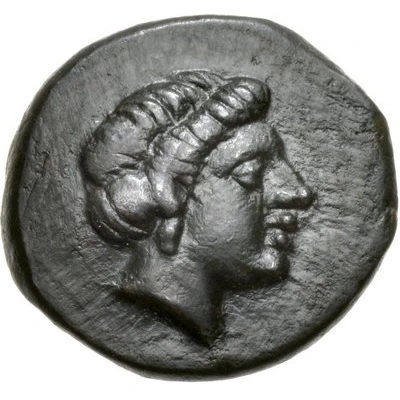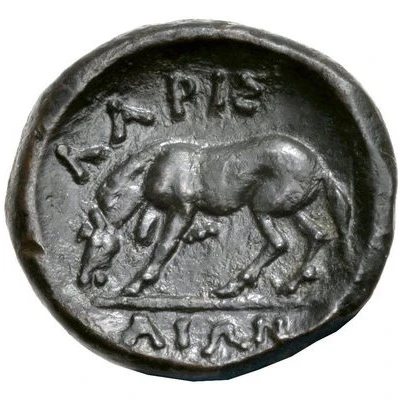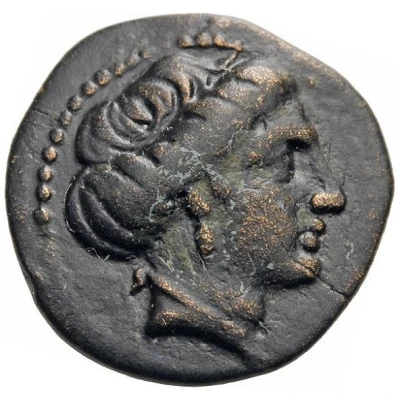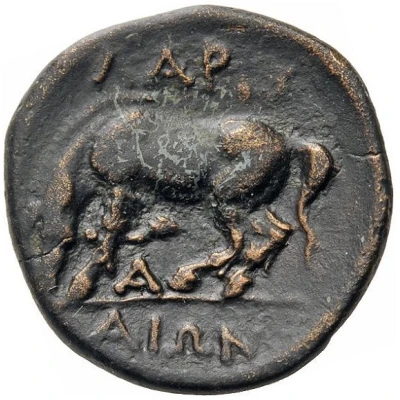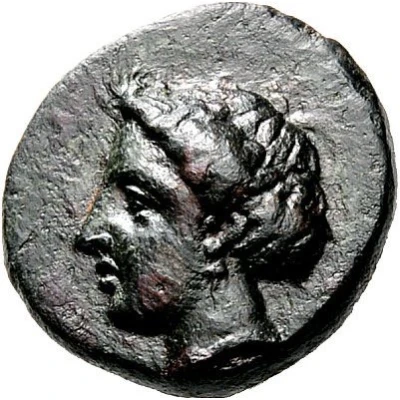
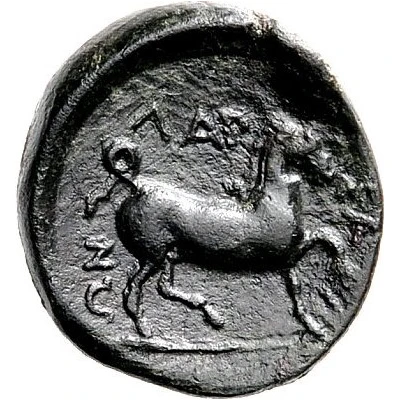

© Nomos AG
Chalkon 390 BC
390 BC year| Bronze | 2.66 g | 14.5 mm |
| Issuer | Larissa (Thessaly) |
|---|---|
| Type | Standard circulation coin |
| Year | 390 BC |
| Value | Chalkon (1⁄48) |
| Currency | Drachm |
| Composition | Bronze |
| Weight | 2.66 g |
| Diameter | 14.5 mm |
| Shape | Round (irregular) |
| Technique | Hammered |
| Demonetized | Yes |
| Updated | 2024-10-10 |
| Numista | N#171094 |
|---|---|
| Rarity index | 97% |
Reverse
Horse prancing to right, with curly tail
Script: Greek
Lettering: ΛΑΡ ΙΣΑΙ ΩΝ
Interesting fact
The Chalkon coin was used as a form of currency in ancient Greece, specifically in the city-state of Larissa in Thessaly. It was made of bronze and had a distinctive design, featuring the head of a nymph on one side and a horse on the other. The coin was introduced during the reign of King Pyras in the 4th century BC and was used for everyday transactions, such as buying goods and services. Despite its small size and relatively low value, the Chalkon coin played an important role in the economy of Larissa and surrounding regions.
